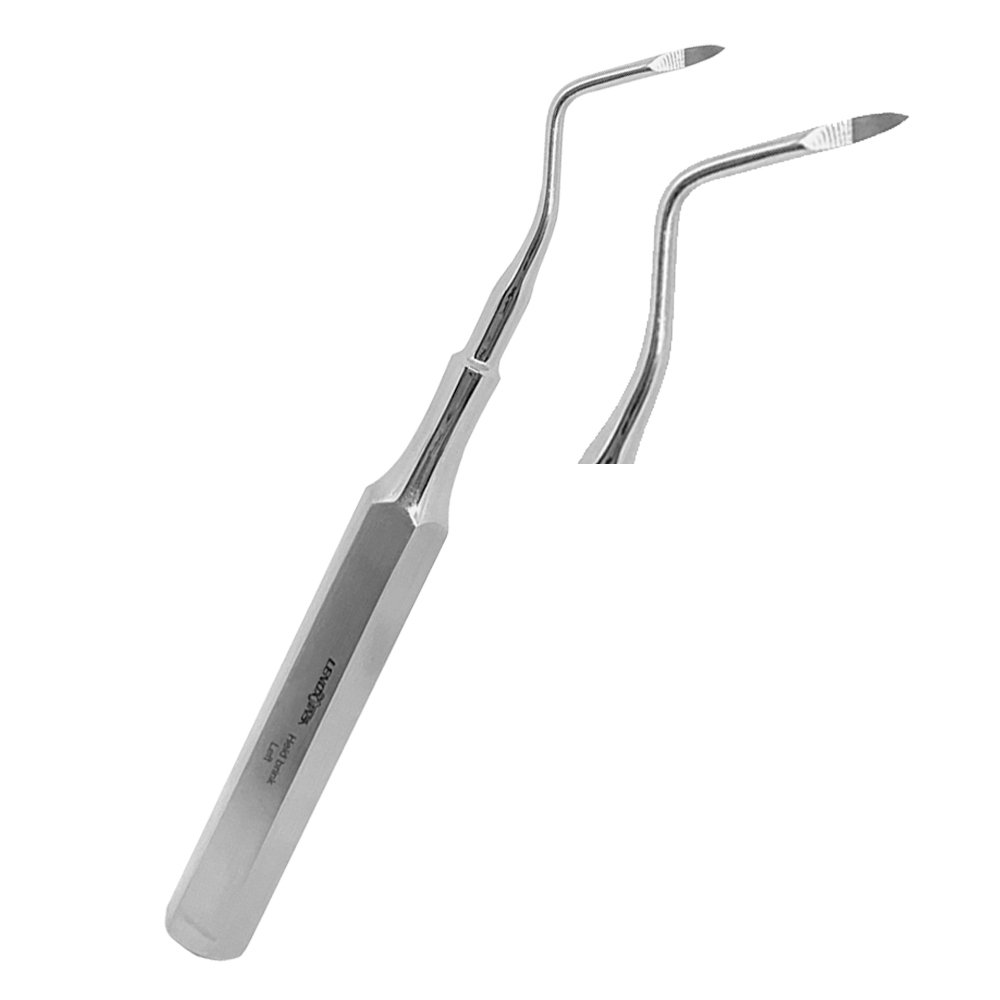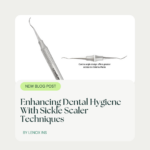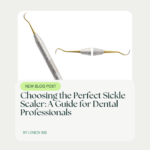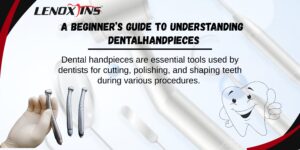Ultimate Guide to the Best Endodontic Tools for Root Extraction
- lenoxinstro
- October 9, 2024
- Dental Surgical, Root Tip pick

Endodontic procedures can be challenging, especially when it comes to root extraction. Did you know that using the right tools significantly reduces the risk of complications during treatment? This guide covers key endodontic tools that improve precision, including essential hand instruments, rotary systems, and advanced irrigation techniques. By understanding these tools, readers will enhance their oral hygiene practices and ultimately improve outcomes in restorative dentistry. This content aims to address common challenges associated with root extraction and provide solutions to streamline the process effectively.
Key Takeaways
- Choosing the right endodontic tools significantly affects patient comfort and treatment outcomes
- High-quality instruments minimize complications and enhance the effectiveness of root extraction procedures
- Effective irrigation techniques improve disinfection and reduce the risk of infection during treatment
- Regular instrument care and proper sterilization practices ensure patient safety and tool longevity
- Access to manufacturer training enhances practitioner skills and optimizes treatment processes in endodontics
Maximizing Success With Optimal Endodontic Tools
Choosing the right root tip pick endodontic tools significantly influences patient outcomes and overall satisfaction. By selecting appropriate instruments for procedures like apicoectomy, practitioners enhance not only clinical efficacy but also patient comfort during treatments. Utilizing advanced solutions, such as laser technology and precise syringes, complies with endodontic standards and improves the quality of life for patients undergoing root extraction procedures.
Improve Outcomes by Selecting Proper Instruments
Selecting the appropriate instruments, such as specialized forceps, is critical for improving outcomes in root extraction procedures. A surgeon‘s choice of tools can minimize inflammation in the mouth and enhance the overall efficiency of the treatment. By incorporating high-quality materials, including effective cement for securing post-extraction restorations, practitioners not only ensure a smoother procedure but also contribute to better postoperative recovery for patients.
Enhance Patient Comfort Through Optimal Tool Use
Enhancing patient comfort during dental extraction procedures is crucial for a positive experience and outcome. By utilizing specialized tools and techniques, practitioners can minimize discomfort, particularly when dealing with teeth such as incisors or deciduous teeth. Employing instruments that accommodate the nerve anatomy of each patient leads to more precise extractions, reducing the need for excessive force and promoting faster recovery.
- Utilize specialized tools to reduce discomfort during dental extractions.
- Focus on incisors and deciduous teeth for specific tool adjustments.
- Consider the anatomy of the nerve to enhance extraction precision.
- Implement effective postoperative care to support recovery.
Ensure Compliance With Endodontic Standards
Ensuring compliance with endodontic standards is vital to preventing complications such as tooth loss and managing patients’ pain effectively. Utilizing high-quality materials, such as titanium instruments, and adhering to best practices are crucial for achieving optimal outcomes. Moreover, the integration of techniques like bone grafting can support the preservation of the tooth structure and enhance the durability of crowns, significantly improving the patient‘s long-term dental health.
| Aspect | Importance | Recommended Tools |
|---|---|---|
| Compliance with Standards | Minimizes complications and ensures successful outcomes. | Titanium instruments, specialized forceps |
| Prevent Tooth Loss | Maintains dental integrity and health. | Bone grafting materials, quality sealing agents |
| Pain Management | Enhances patient comfort during procedures. | Effective anesthetics, precision instruments |
| Crown Durability | Improves long-term dental solutions. | Reliable crowning materials |
With the right endodontic tools in hand, the path to success becomes clearer. Now, it’s time to turn attention to the essential hand instruments that make root extraction precise and effective.
Utilizing Essential Hand Instruments for Root Extraction
Dental professionals rely on essential hand instruments for root extraction to achieve effective results. Techniques using explorers and probes assist in navigating root canals efficiently, while files and reamers shape the canals with precision. Optimal obturation is achieved with spreaders and pluggers, ensuring thorough filling. Additionally, applying precision techniques in apical treatment is vital for addressing complications, including toothaches and pressure in premolars during a dental emergency.
Navigate Root Canals With Explorers and Probes
Navigating root canals effectively requires the use of explorers and probes, which are essential hand instruments in endodontics. These tools facilitate a minimally invasive procedure by allowing practitioners to accurately assess the condition of the pulp within molars, ensuring precise access to the root canal system. Furthermore, their utilization can significantly improve outcomes, especially when combined with appropriate anesthesia, making the process smoother for patients undergoing oral and maxillofacial surgery.
- Importance of explorers and probes in endodontics.
- Role in minimally invasive procedures.
- Enhancing access to molars.
- Benefits in assessing pulp condition.
- Integration with anesthesia for improved patient comfort.
Shape Canals Effectively Using Files and Reamers
Effectively shaping root canals using files and reamers is essential for ensuring proper treatment of dental abscesses and related infections. These instruments allow practitioners to navigate the complex anatomy of the root canal system, liberating it from debris and particulates, including blood and infected tissue. By maintaining a dry environment with a rubber dam, clinicians can create optimal conditions for thorough shaping and cleaning, ultimately promoting successful endodontic outcomes.
- Shaping canals effectively to treat abscesses.
- Utilizing files and reamers for debris removal.
- Importance of understanding root canal anatomy.
- Managing blood and particulates during procedures.
- Implementing a rubber dam for optimal treatment conditions.
Achieve Optimal Obturation With Spreaders and Pluggers
Achieving optimal obturation with spreaders and pluggers is essential for the effective treatment of root canal systems. These instruments play a vital role in the debridement process by ensuring complete filling of the tooth‘s canals, especially in complex cases within the mandible. Proper application of these tools acts as a lever, enabling clinicians to achieve a dense and secure filling that mitigates the risks of complications such as reinfection, which can be particularly relevant for patients with underlying conditions such as cardiovascular disease.
| Instrument | Function | Benefits |
|---|---|---|
| Spreaders | Facilitates effective compaction of filling material. | Improves sealing of the root canal, reducing reinfection risk. |
| Pluggers | Helps to pack the filling material tightly. | Ensures optimal density and durability for treatment longevity. |
| Optimal Obturation Techniques | Utilization of spreaders and pluggers for thorough filling. | Promotes successful outcomes and enhances patient comfort. |
Apply Precision Techniques in Apical Treatment
In apical treatment, applying precision techniques is essential for successful outcomes, particularly when addressing complications associated with buried wisdom teeth in the maxilla. Practitioners should utilize effective disinfectants to maintain a sterile environment, minimizing the risk of infection during and after the procedure. Additionally, monitoring the patient’s response to medication can further enhance comfort and recovery, especially amidst the challenges presented by unpredictable dental insurance coverage for necessary treatments.
Hand tools have their place in root extraction, providing precision and control. Yet, a new approach awaits; rotary tools can elevate this work, adding speed and efficiency to the process.
Boost Efficiency by Integrating Rotary Tools
Rotary endodontic systems significantly enhance the efficiency of root extraction procedures. By leveraging the benefits of rotary instruments, practitioners can achieve superior precision and reduced bleeding during treatments. Integrating these tools into daily practice streamlines workflows and results in better patient outcomes. Additionally, examining case studies with rotary technology offers practical insights into their advantages for graft placement and prosthesis stabilization while minimizing wound complications.
Discover Rotary Endodontic Systems
Rotary endodontic systems offer significant advantages in root extraction procedures, improving both precision and efficiency. These advanced dental instruments utilize a rotating wire mechanism that allows for enhanced access and treatment of dentin, leading to more effective canal cleaning and shaping. By incorporating rotary tools into their practice, dental professionals can reduce patient discomfort and recovery time, ultimately enhancing overall treatment outcomes.
| Feature | Benefit | Tool Example |
|---|---|---|
| Rotating Wire Mechanism | Enhances precision in accessing root canals. | Rotary files |
| Efficient Cleaning | Improves dentin structure integrity and reduces debris. | Endodontic motors |
| Reduced Patient Discomfort | Minimizes trauma to surrounding tissues. | Rotary obturation systems |
Leverage the Benefits of Rotary Instruments
Leveraging the benefits of rotary instruments in endodontic therapy enhances both precision and efficiency during root extraction procedures. Instruments such as stainless steel elevators and rongeurs play a critical role in accessing and removing teeth while minimizing damage to surrounding tissues, including periodontal ligaments. By integrating these advanced rotary tools into clinical practice, dental professionals can streamline workflows, reduce patient discomfort, and ultimately improve treatment outcomes, making root extractions more effective and efficient.
Integrate Rotary Tools Into Your Practice
Integrating rotary tools into endodontic practice significantly enhances the efficiency of root extraction procedures. By incorporating instruments such as rotary files, practitioners can achieve precise canal shaping while minimizing patient discomfort during surgery. These tools streamline workflows, often reducing the time required for treatments that might otherwise necessitate more traditional methods, thereby accommodating broader services like braces and bridges, which require precise preparation.
| Aspect | Benefit | Example Tools |
|---|---|---|
| Precision | Improves accuracy in canal treatments. | Rotary files |
| Efficiency | Reduces overall surgery time. | Endodontic motors |
| Patient Comfort | Minimizes trauma and discomfort. | Rotary obturation systems |
Learn From Case Studies With Rotary Technology
Case studies involving rotary technology highlight significant advancements in root extraction procedures, particularly with the implementation of high-quality steel drills. These studies demonstrate how rotary tools can improve precision when navigating challenging tooth structures, including the lower jaw, by minimizing the need for excessive force and reducing trauma to surrounding tissues. Furthermore, integrating rotary techniques not only enhances treatment outcomes but also contributes to patient satisfaction through faster recovery times and improved comfort during procedures, ultimately allowing dentists to provide comprehensive services, such as tooth whitening, more efficiently.
Efficiency in work leads to clarity in results. As one looks to improve, the focus shifts to effective cleaning methods, where advanced irrigation systems hold great promise.
Optimize Cleaning With Advanced Irrigation Systems
Recognizing the importance of irrigation is vital in endodontics, especially for effective root canal treatments. Selecting effective irrigants plays a crucial role in managing tooth decay and preventing complications like periodontal disease. Additionally, applying ultrasonic and sonic activation techniques enhances the cleaning efficiency of irrigants, ensuring optimal outcomes in root extraction procedures.
Recognize the Importance of Irrigation
Irrigation plays a critical role in endodontic treatments, particularly in effectively managing bacteria and minimizing the risk of infection during root extraction. Proper irrigation techniques are essential for cleaning the root canal systems, especially when dealing with complex cases such as infections associated with the maxillary central incisor or complications arising from a sinus lift. By using advanced irrigation systems that activate irrigants ultrasonically, practitioners can ensure thorough disinfection and debris removal, which promotes optimal healing and reduces the likelihood of injury to surrounding structures.
| Technique | Importance | Benefits |
|---|---|---|
| Ultrasonic Irrigation | Enhances cleaning efficacy and penetrates complex anatomies. | Reduces bacteria and minimizes infection risk. |
| Sonic Activation | Improves the effectiveness of irrigants. | Facilitates thorough debris removal and disinfection. |
| Standard Irrigation | Basic cleaning protocol. | Accessible and necessary for initial debridement. |
Select Effective Irrigants for Treatment
Selecting effective irrigants is essential for successful root extraction, particularly in emergency situations where swift action is required to manage infections and promote healing. The use of advanced irrigants, such as sodium hypochlorite, enhances the irrigation process by penetrating complex canal systems while being mindful of the patient‘s gums and surrounding tissues. Implementing these solutions alongside a dental dam can optimize the irrigation process, improving overall disinfection and increasing the likelihood of favorable treatment outcomes.
Apply Ultrasonic and Sonic Activation Techniques
Applying ultrasonic and sonic activation techniques significantly enhances the cleaning capabilities during root extraction procedures. These methods improve the penetration of irrigants, effectively removing debris and bacteria from the root canal system, which is crucial when performing pulp capping or pulpotomy procedures. By utilizing such advanced techniques, dental professionals can ensure thorough disinfection, helping to preserve the surrounding tissue and optimize patient outcomes, especially when guided by cone beam computed tomography for precise instrumentation.
Effective cleaning is vital, but the tools chosen can make all the difference. As one considers precision in irrigation, it becomes equally important to select endodontic tools tailored to one’s practice.
Choose Endodontic Tools Suited to Your Practice
Choosing the right endodontic tools is essential for effective root extraction, covering key aspects such as evaluating quality and performance, aligning tools with practice requirements, and considering cost and value in selection. Additionally, access to training and manufacturer support enhances practitioner expertise. This section will provide insights into these areas, ensuring practitioners utilize the best tools for achieving optimal outcomes in root tip procedures while maintaining hygiene and addressing calculus buildup effectively.
Evaluate Quality and Performance
Evaluating the quality and performance of endodontic tools is essential for ensuring successful root extraction. Practitioners should consider materials such as stainless steel or titanium which offer durability and precision during procedures. Additionally, tools should be assessed based on their ease of use and the level of comfort they provide to patients, as these factors directly influence treatment outcomes.
- Consider materials like stainless steel and titanium for durability.
- Assure tools are easy to use for enhanced efficiency.
- Evaluate patient comfort as a critical factor in tool selection.
Align Tools With Practice Requirements
Aligning endodontic tools with practice requirements is crucial for maximizing efficacy and ensuring seamless integration into treatment protocols. Dental professionals should assess their specific needs based on the types of procedures performed, the complexity of cases, and patient demographics. For instance, a practice specializing in pediatric dentistry might prioritize tools that cater to smaller anatomies and maintain greater patient comfort, while an endodontic clinic focused on complex root canal treatments may require advanced rotary systems for precision.
| Practice Type | Tool Priorities | Examples of Recommended Tools |
|---|---|---|
| Pediatric Dentistry | Patient comfort, smaller instruments | Miniature forceps, flexible endodontic files |
| General Dentistry | Versatility, reliability | Standardized forceps, rotary endodontic systems |
| Complex Endodontics | Precision, advanced technology | High-quality rotary files, ultrasound cleaning devices |
Consider Cost and Value in Selection
When selecting endodontic tools for root extraction, practitioners must carefully consider both cost and value to ensure they invest wisely in their practice. High-quality tools, though potentially more expensive, often lead to better patient outcomes and increased efficiency in procedures, resulting in long-term savings. By evaluating the durability and performance of each tool, dental professionals can make informed decisions that balance budget constraints with the need for precision and reliability in root extraction.
- Assess the long-term cost-effectiveness of high-quality tools.
- Consider the impact of tool performance on patient outcomes.
- Evaluate durability to minimize frequent replacements.
- Balance budget constraints with the necessity for precision.
Access Training and Manufacturer Support
Accessing training and manufacturer support is essential for dental professionals aiming to optimize their endodontic practices, particularly for root extraction procedures. Engaging with manufacturers often provides valuable insights into the latest tools and technologies available, thus enabling practitioners to refine their techniques and improve patient care. For instance, many manufacturers offer workshops or training sessions that focus on effective usage of specific instruments, which significantly enhance the practitioner’s skill set and, ultimately, patient outcomes.
| Support Type | Benefits | Examples |
|---|---|---|
| Manufacturer Training | Enhances skills and knowledge of endodontic tools. | Workshops, online courses |
| Technical Support | Provides assistance with instrument issues and usage. | Hotline, email support |
| Product Demonstrations | Offers insights into the latest technologies. | In-office demos, webinars |
Choosing the right endodontic tools is just the beginning. Now, attention turns to maintaining and sterilizing those instruments, ensuring they perform well and keep patients safe.
Maintain and Sterilize Instruments Properly
Implementing best practices for instrument care is essential for maintaining the effectiveness of endodontic tools used in root extraction. Utilizing effective sterilization methods not only enhances instrument longevity but also ensures compliance with health and safety regulations. This section will provide practical insights on these critical topics, focusing on how to properly care for and sterilize instruments to optimize their performance and lifespan.
Implement Best Practices for Instrument Care
Implementing best practices for instrument care is crucial to maintaining the effectiveness and safety of endodontic tools used in root extraction. Regularly cleaning instruments after each use and utilizing appropriate sterilization methods, such as autoclaving, ensures that they remain free from contamination, thereby reducing the risk of infection for patients. Additionally, proper storage will help to prevent damage and deterioration, allowing practitioners to rely on these essential tools for precise and efficient treatment over time.
Use Effective Sterilization Methods
Effective sterilization methods are paramount in maintaining the integrity of endodontic tools used for root extraction. Practitioners should implement autoclaving, which utilizes high-pressure steam to eliminate bacteria and viruses, ensuring instruments remain safe for patient use. Regular monitoring of sterilization equipment, combined with immediate and careful handling post-sterilization, significantly contributes to compliance with health standards and enhances overall patient safety during dental procedures.
Enhance Instrument Longevity
To enhance instrument longevity, dental professionals should prioritize proper care and maintenance of their endodontic tools. Regular cleaning after each use—using appropriate solutions that effectively remove debris and contaminants—can significantly prevent deterioration. Moreover, storing instruments in a dry, organized environment not only safeguards their integrity but also ensures readiness for future procedures, ultimately improving efficiency and patient care in root extraction treatments.
Comply With Health and Safety Regulations
Complying with health and safety regulations is essential for dental practices to ensure patient safety and maintain the integrity of endodontic tools used in root extraction. Practitioners must adhere to established guidelines, such as those set by the Centers for Disease Control and Prevention (CDC) and local health authorities, which outline sterilization procedures and instrument handling practices. By committing to regular training and audits, dental professionals can ensure their practices not only meet legal requirements but also foster trust and confidence among their patients.
- Understand the importance of compliance with health regulations.
- Implement established sterilization procedures for instruments.
- Conduct regular training sessions for staff on hygiene protocols.
- Perform audits to ensure adherence to safety standards.
- Foster patient trust through responsible practices.
Conclusion
The “Ultimate Guide to the Best Endodontic Tools for Root Extraction” underscores the crucial role that selecting the right instruments plays in enhancing patient outcomes and overall procedural efficiency. By prioritizing advanced tools and techniques, dental professionals can significantly improve comfort and minimize complications during root extraction. Implementing best practices in instrument care and maintaining compliance with health regulations further ensures optimal performance and safety. Ultimately, this guide empowers practitioners to make informed decisions, leading to better patient care and more successful treatment outcomes.











